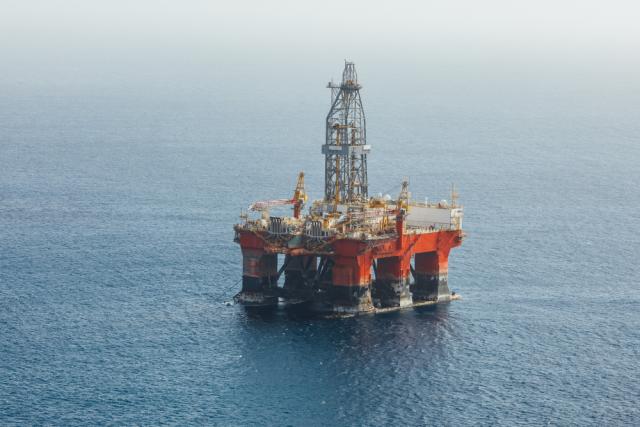
The rise in offshore oil and gas production expected in 2019 and beyond is due in part to the coming onstream of new fields aided by technological advances, which have dramatically cut E&P costs. (Source: Shutterstock.com)
[Editor’s note: Opinions expressed by the author are his own.]
Industry experts at Rystad Energy expect global deepwater oil production to surpass 10 million barrels per day (MMbbl/d) in 2019, an increase of 700,000 bbl/d compared to last year, as new offshore fields come online in places such as Angola, Norway and Nigeria.
New fields starting up offshore Brazil and the U.S. Gulf of Mexico (GoM) could further push total deepwater liquid production to 10.3 MMbbl/d. The Petrobras-operated Lula Field offshore Brazil, for example, has the capacity to produce 150,000 bbl/d, while the Royal Dutch Shell-operated Kaikias Field in the GoM is expected to produce 40,000 bbl/d.
Energy consultancy Wood Mackenzie believes 2019 will be “a historic year” for the GoM, with Shell’s Appomattox marking the first production ever from a Jurassic reservoir. Drilled in waters up to 2,200 m deep (7,400 ft), Appomattox is expected to produce 175,000 barrels of oil equivalent per day and is Shell’s largest project in the region.
According to Wood Mackenzie, drilling in the GoM is also set to post the first production increase in four years and new projects are expected to be sanctioned. This rise in activity owes much to the fact that operators have driven down the cost of developing new deepwater barrels by more than 50% since 2013, Wood Mackenzie said in November.
Production drivers
The rise in offshore oil and gas production expected in 2019 and beyond is due in part to the coming onstream of new fields aided by technological advances, which have dramatically cut E&P costs. The application of digital technologies—such as the Internet of Things, cloud computing and automation—have cut costs and improved productivity.
Shell, Total and Equinor have also simplified projects and negotiated better terms with contractors to cut costs and increase efficiency. BP is a case in point. It has halved costs in the North Sea from $60 to $30 per barrel by implementing a policy of standardization, simplification and rigorous cost control.
In parallel, companies are focusing on lower cost opportunities off Indonesia, Australia, Malaysia and India. Unproven resources in Nova Scotia, South Africa and Namibia with their simple and well understood petro-geology, in combination with a more favorable business-operating environment, could also prove attractive to companies.
Similarly, U.S. President Donald Trump’s administration has opened additional areas of the U.S. Outer Continental Shelf for exploration and drilling in response to industry lobbying and the expectation that shale oil output will plateau in the next decade. Offshore production is therefore needed to satisfy rising U.S. demand.
Economic growth in developing countries, population growth and the need to replace the loss of about 3 MMbbl/d of output a year from conventional oil fields, which are past their peak and in decline, underpins the growth of investment in deepwater fields.
New investment
Wood Mackenzie’s latest research indicates that total annual deepwater capex could increase from US$50 billion today to $60 billion by 2022, mainly due to big new projects in the Americas such as those offshore Guyana, Brazil and the U.S. GoM. Already, the GoM is producing a record nearly 2 MMbbl of crude oil a day and is expected to increase its output each year over at least the next five years as new projects begin operation and new discoveries are made.
One thing is clear, major energy companies, which have the capability to operate in deep water, now have much more spare cash available on their balance sheets to focus on deepwater projects which, thanks to technology, are improving efficiencies and reducing costs, requiring less capital than ever.
Recommended Reading
How Diversified Already Surpassed its 2030 Emissions Goals
2024-04-12 - Through Diversified Energy’s “aggressive” voluntary leak detection and repair program, the company has already hit its 2030 emission goal and is en route to 2040 targets, the company says.
BKV CEO Chris Kalnin says ‘Forgotten’ Barnett Ripe for Refracs
2024-04-02 - The Barnett Shale is “ripe for fracs” and offers opportunities to boost natural gas production to historic levels, BKV Corp. CEO and Founder Chris Kalnin said at the DUG GAS+ Conference and Expo.


